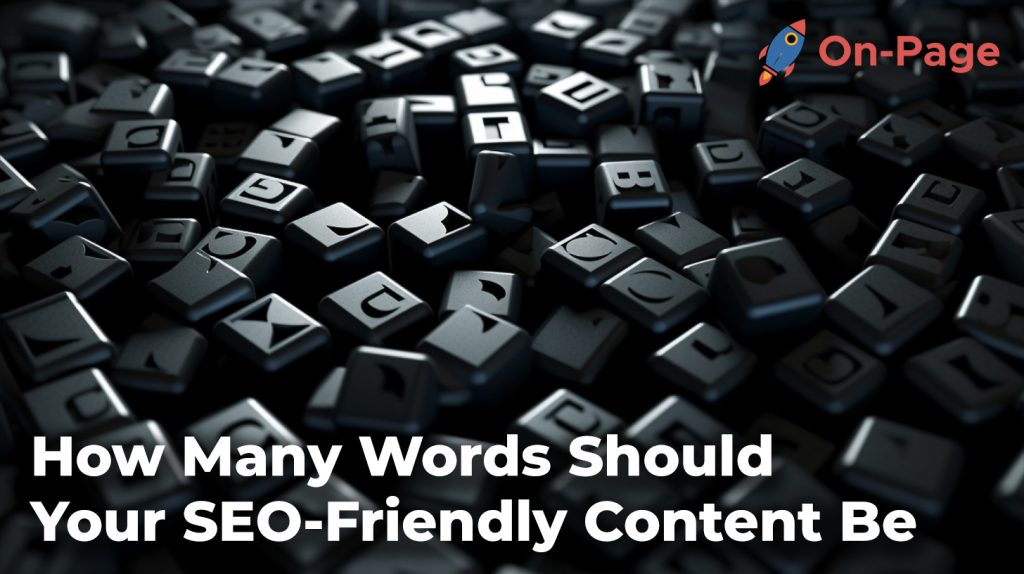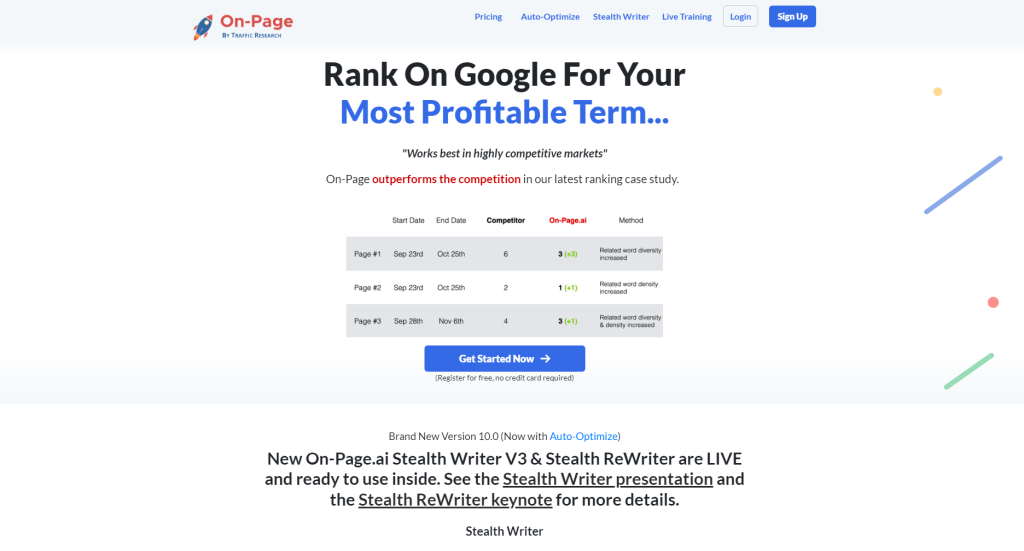
Size matters, but does it apply to your SEO-friendly content as well? Let’s discover the ideal word count for higher ranking and better engagement. Unravel this elusive magic number that can propel you to the top of search engine results!
While there is no one-size-fits-all answer to this question, research suggests that longer-form content tends to perform better in search engine rankings. HubSpot has found that posts with a word count of 2,100-2,400 tend to do well, but it’s important to not sacrifice quality and relevance over length. Additionally, Yoast SEO recommends writing more than 300 words for regular posts or pages. Ultimately, when creating content, focus on providing valuable, informative insights that will serve your audience’s needs and interests.
Ideal Content Length for SEO
Determining the ideal content length for your SEO-friendly content depends on various factors, such as your target audience, the industry you’re in, and the specific goals of each piece of content. While there is no hard and fast rule for word count when it comes to creating optimized content, data suggests that longer-form content typically performs better on search engines.
According to research by Backlinko, the average Google first-page result contains 1,447 words. In another study by SerpIQ, the top ten search results for most keywords had over 2,000 words. These findings suggest that Google favors longer articles with high-quality content.
For instance, if you are operating a blog about luxury travel destinations around the world, your target audience may be well-educated individuals who want an in-depth and comprehensive analysis of various places they could visit. Therefore, it would be reasonable to produce long-form content with extensive details about specific locations’ histories.
However, it’s important not to focus solely on word count. Instead, create a balance between readability and keyword optimization to provide value to both users and search engines.
Additionally, studies show that longer articles tend to generate more backlinks and shares compared to shorter pieces of content. The same Backlinko study found that pages with higher word counts received more social media shares than those with lower word counts.
However, some may argue that creating long-form content doesn’t necessarily guarantee improved rankings or better user engagement. There is still an argument that focusing on crafting high-quality and engaging content should be prioritized over strict adherence to word counts.
Let’s take a closer look at specific factors that can influence how long your content should be to improve search engine rankings.
Factors Influencing Word Count

- User Intent: Understanding the intent behind a user’s search can help you craft content that addresses their specific needs. Longer-form content that goes more in-depth into a topic may be required for queries with deeper intent, such as researching a particular product or service.
- Industry: The type of industry or niche can also play a significant role in content length. For example, the finance and law industries often require more extensive and detailed articles to address complex topics adequately. However, some niches may require less length to express a complete idea or solution.
- Competition: The level of competition in your industry is another factor to consider when deciding on optimal content length. In highly competitive fields, it often takes longer and more comprehensive pieces of content to stand out from the crowd and rank high on search engines.
- Topic Depth: Some subjects require significantly more coverage than others to satisfy user intent fully. More comprehensive topics may need longer-form articles to provide thorough coverage.
For instance, let’s say you’re creating a blog post about making sourdough bread. Shorter-form articles might cover the basics of making sourdough and take an approach similar to cooking shows that offer quick tips for whipping up your first loaf at home. Suppose you want to create longer-form content that goes more in-depth into the topic. In that case, you could provide research-backed information about how to choose flour quality for better results, the science behind yeast fermentation, and numerous techniques for shaping bread loaves.
Think of the ideal content length like a recipe for baking cookies – too little flour or sugar will make them flat; too many chocolate chips will make them too sweet. The same concept applies when creating SEO-friendly content – attention should be paid not only to word counts but also to proper keyword usage and readability.
Understanding factors influencing word count can ultimately help guide the creation of long-form optimized content tailored to your audience’s preferences and preferences. In the next section, we will detail how high-quality content should be created and optimized to ensure maximum engagement with your target audience.
Content Length Variations by Industry

The suitable length of SEO-friendly content varies depending on the industry or niche you’re in. Generally, industries with a higher complexity level need longer content. For instance, niches such as finance and health require more comprehensive explanations than other industries.
On the other hand, businesses in the fashion and entertainment industry can get away with shorter content that is focused more on visuals rather than text. Therefore, it’s essential to conduct extensive research to determine the type of content that performs best in your specific industry.
For instance, if you’re creating content for a finance firm, you’ll need to provide detailed explanations and analysis of financial concepts. Potential clients seeking financial advice will be looking for in-depth information they can rely on.
In contrast, if you were creating content for an e-commerce store selling clothing, it might only require brief product descriptions and high-quality images showcasing the products.
It’s vital to keep in mind that there are many other factors at play when determining the ideal length of your content.
Creating High-Quality Content

While content length plays a crucial role in ranking algorithms, it’s not enough to rank high on SERPs just by having long-form content. It needs to be high-quality too.
High-quality content should always have a clear purpose or intention that solves the user’s query. It should also have a cohesive and well-organized structure with helpful subheadings that make it easy to scan through.
Moreover, graphics and multimedia add value to your content by making it more engaging and informative. By incorporating images or videos into your posts or articles, you can break up large blocks of text and offer visual aids when necessary.
It’s also important to ensure your writing style is easy-to-read and comprehensible without grammatical errors. Using AI-powered writing tools like On-Page.ai should help achieve this.
Think of the last time you came across poorly written content. Chances are, the sentences were difficult to read or didn’t flow naturally, making it an uncomfortable experience for the reader.
Many people assume that writing high-quality content has to be time-consuming and expensive. While more time-intensive processes such as researching can take a while, other aspects of producing high-quality content can be done quickly and easily with resources such as free templates and tools like On-Page.ai.
Balancing Keyword Use and Readability
Creating high-quality, SEO-friendly content is a balancing act between using keywords to rank well on search engines and making the content readable for users. Placing too many keywords can harm the readability of your content, while not using enough can lead to losing keyword relevance and ranking. Therefore, it is essential to strike a balance between keyword density and readability to ensure that the content remains engaging, informative, and effective for both search engines and users.
Consider this example. If someone searched for “how to make vegan meatballs,” and clicked on a link that had keyword stuffing such as “vegan meatballs,” “best vegan meatballs,” or “easy vegan meatball recipe” 10 times within the first paragraph; the user may be put off by how unnatural the reading experience feels. This approach does not benefit the reader as much as they rely on Google for quality results. A more sensible approach would be to mention “vegan meatballs” three or four times within the content’s context, making sure keywords flow naturally into sentences.
Keyword density should be kept under 2% of the total words used in the content piece. There are various tools to measure keyword density; however, your best bet is always to check if your page reflects a natural conversation rather than contrived efforts.
Keyword stuffing can end up getting you nowhere in Google rankings since Google focuses more on topic relevancy rather than focusing solely on specific keywords. High-quality content addresses user queries comprehensively in an engaging way. The idea is that when readers enjoy themselves through your site (i.e., low bounce rate), it would show Google that you have information worth sharing even before looking at specific keyword usage patterns.
While avoiding ‘keyword stuffing’ at all costs, you must also pay attention to internal linking- when you use multiple pages across your site; using specific natural terms and phrases that repeat on several pages should make it easier for Google to catalog, categorize and index your website faster.
This can be likened to how a library functions. The interconnectivity of the information ensures better sorting, indexing, and subsequent ranking. However, avoid overusing internal linking as it can make the content appear spammy.
Say you run an online cake store and have different categories/pages on your website where people could find cakes for different occasions. If you want to link a Christmas cake product page to a Christmas gifts landing page via anchor text, use phrases that fit contextually like ‘Christmas treats,’ ‘Holiday-themed Cakes,’ instead of ‘shop now.’
Balancing keyword density with ensuring readability is just one part of creating high-quality SEO-friendly content. The next section will discuss the correlation between content length and search engine performance.
Content Length and Search Engine Performance

There is a constant discussion among SEO experts about how long an article or content piece should be. Google aims at providing users with in-depth answers to their queries: considering this, a longer word count has been found to give significantly better chances of being ranked higher than those with less word volume.
A recent study by Backlinko confirmed that the average first-page result on Google contains 1,447 words. The same report noted that content with more extended blog post ranks were likely to earn more backlinks than those that don’t. Another factor is that longer verbiage helps create comprehensive guides for various queries since Google favors them.
Think about someone aiming to purchase a new car; they would seek out any trusted sources for valuable advice by looking at articles like “What to know before buying a car.” They are interested in everything from technical specs to financing options. Suppose you’ve done your research on that topic and come up with a comprehensive, interactive infographic providing users with substantial information. In that case, not only would it be informative, but users are likely to share it across multiple platforms.
While the ideal word count for Google ranking would appear to sit around 1,400, don’t hold too tightly to this number. There is no one-size-fits-all solution for every query as different industries have different needs. For instance, technology-based content may require shorter verbiage since audiences in that sphere tend to prefer quick answers.
You must double down on quality content; whether it’s short-form or long-form varies per niche requirement and intent searches. Therefore, ensure you focus on creating relevant and valuable content rather than plain word volume.
Think of your website as your home library; it reflects how much knowledge or expertise you possess about a given field – how much information do you have to offer? The more detailed and well-written knowledge base you accumulate over time, the more industries would turn to you as their go-to source of comprehensive information.
Content length can play an essential role in search engine optimization if used correctly. However, catering to your audience’s needs is key. The next section will highlight some tips to help tailor content length depending on your target audience.
Implications on Ranking and Site Authority

One of the most significant implications of content length on SEO is its effect on site ranking and authority. In general, long-form, comprehensive content tends to rank higher in search engine results pages (SERPs) than shorter pieces. Google’s algorithm prefers longer content because it signals to the search engine that the page contains high-quality, in-depth information about a given topic.
Longer content also has the benefit of attracting more backlinks from other sites, which is a key factor in determining site authority. Backlinks are like votes of confidence from other sites; the more backlinks a site has, the more trustworthy and authoritative it appears to Google. Longer content tends to earn more backlinks because it’s often cited as a source for information or analysis.
For example, imagine you’re writing an article about how to train for a marathon. If your post is only 300 words long, your readers are likely to feel shortchanged; there’s no way you could possibly cover all the necessary training techniques and advice within that limited space. On the other hand, if you write a 2,500-word article that covers everything from diet and nutrition to gear selection and mental preparation, your readers will be thrilled with the level of detail you’ve provided.
The same logic applies to Google’s algorithm. When it crawls your site and sees that you’ve posted a deep-dive analysis of a topic that spans thousands of words and includes a variety of multimedia elements like images and videos, it will reward your site with a higher rank than if you had published something much shorter.
That being said, there’s no one-size-fits-all approach when it comes to content length. It ultimately depends on the type of content you’re creating and what your goals are for each piece.
Tailoring Content Length to Your Audience

When you’re deciding on the length of your content, it’s important to consider your audience. If you’re writing for a highly specialized and technical audience, longer pieces may be appropriate because they’ll appreciate the in-depth analysis of complex topics.
If, on the other hand, you’re creating content for a broad audience that includes both experts and laypeople alike, shorter pieces may be more effective. These individuals are likely looking for quick answers or solutions, and aren’t as interested in sifting through lengthy articles to find what they need.
For instance, let’s say you’re running a blog about home improvement. If you’re publishing an article about how to patch drywall holes, a 300-word post might do the trick. Your readers are likely homeowners who want to fix their walls quickly and efficiently without having to deal with overly complicated instructions.
On the other hand, if you’re writing an article about selecting the right type of insulation for your home, you’ll want to provide more comprehensive information. Homeowners will need details about R-value, moisture resistance, and installation methods. In this case, a 2,500-word post would likely be more appropriate.
Of course, there are arguments against this approach as well. Some marketers argue that shorter posts can actually lead to higher engagement rates because they’re easier to digest and share on social media platforms. They also point out that shorter posts can be formatted as listicles or infographics that are visually appealing and easy to consume.
However, these arguments shouldn’t necessarily come at the expense of depth and quality. Even with shorter pieces of content, it’s essential to provide value by answering questions or providing insights that are useful to your target audience.
Ultimately, the ideal content length for your site depends on your specific goals and audience needs. Whether you choose shorter or longer pieces of content, make sure they deliver real value to your readers by providing actionable insights and relevant information.
- A study conducted by Hubspot in 2020 revealed that their most successful blog posts in terms of search engine rankings had an average length of 2,100-2,400 words.
- Research conducted by SerpIQ in 2016 showed that the top 10 search results on Google featured content that had an average length of 2,416 words.
- A study published in 2019 by Semrush found a correlation between longer content and higher monthly organic search traffic, with pages having over 3,000 words seeing a significant increase in traffic compared to pages with only around 900 words.
Utilizing Analytics and User Metrics

In the world of SEO, metrics are king. The data that can be collected from site traffic, user behavior, and other sources provide invaluable insights into how your website is performing and how users are interacting with it. This information can be used to optimize content length and improve search engine performance.
One useful metric to consider when determining content length is time on page. This measures how long visitors spend on each page of your site. If you notice that visitors are spending a significant amount of time on a particular page, it may be an indication that the content is engaging and informative. On the other hand, if visitors are leaving quickly, it could signal that the content is too long or not relevant to their needs.
Another metric to consider is the bounce rate. This measures the percentage of visitors who leave your site after viewing only one page. A high bounce rate can indicate that your content is not meeting the needs of your target audience or that users are encountering technical problems on your site. By tracking changes in bounce rates over time, you can gain insight into which types of content are resonating with your audience and adjust accordingly.
While metrics such as time on page and bounce rate can be useful for determining content length, it’s important to remember that there is no one-size-fits-all solution. The ideal content length will vary depending on factors such as industry, user intent, and keyword difficulty. It’s also worth considering whether your audience prefers shorter or longer-form content based on their interests and reading habits.
Think of content length like a recipe – there are certain ingredients that should always be included, but the exact proportions will vary depending on personal preference and dietary restrictions. Just as a chef might experiment with different spices or cooking methods to find the perfect flavor profile, you may need to try out different content lengths to see what resonates best with your target audience.
To get started, consider conducting A/B tests on various pieces of content to compare how different lengths perform. You could also use tools like heat maps and click tracking to understand which sections of your pages are most engaging to users.
Ultimately, the goal of any piece of content is to provide value to the user while meeting the requirements of search engine algorithms. By using data-driven insights and focusing on user intent, you can create high-quality content that ranks well and engages your audience.
If you’re looking for a tool that can help streamline this process, I highly recommend On-Page.ai. Its AI-powered features and cutting-edge technology make it easy to optimize your content length for maximum impact and drive more traffic to your site.

Frequently Asked Questions
Are there any exceptions to the rule regarding the ideal word count for SEO?
As with any rule, there are exceptions when it comes to the ideal word count for SEO-friendly content. One such exception is social media platforms like Instagram, where shorter posts tend to perform better. According to studies, Instagram captions with around 138-150 characters receive the highest engagement rates.
Another exception may be for very niche topics where the search volume is low and competition is minimal. In these cases, a shorter article with highly targeted keywords and valuable information may still rank well in search engines.
It’s important to remember that while word count can be a factor in SEO, it should not be the sole focus of your content strategy. Quality content that answers user intent and provides value to readers will always ultimately rank higher than content that simply meets a specific word count.
In short, while there may be exceptions to the rule regarding the ideal word count for SEO, it’s crucial to consider the context of your topic and audience. Don’t get too caught up in hitting a specific number of words – focus on creating high-quality content that resonates with your target audience.
How does keyword density play into the ideal word count for SEO-friendly content?
Keyword density plays an essential role in determining the ideal word count for SEO-friendly content. It is defined as the number of times a target keyword appears on the page, divided by the total number of words on that page.
In the past, marketers would stuff their content with a high percentage of keywords to rank higher on SERPs. However, in recent times, search engines have become smarter and are now capable of detecting text that has been unnaturally stuffed with keywords, resulting in penalties for website owners who practice this technique.
Thus, it is recommended to have a keyword density of 0.5-2% per article. This means using your target keyword once every 150-200 words.
Regarding ideal word count, statistics show that longer articles tend to perform better on search engines than shorter ones. A study published by Backlinko found that the average Google first page result contains 1,447 words. That said, it does not mean that shorter content cannot rank well too. As long as your content is informative and engaging to your audience, it can still be SEO-friendly despite its length.
Is there a minimum or maximum word count that works best for SEO?
Ah, the age-old question: how long should my SEO-friendly content be? Some may argue that there’s a magic word count that guarantees success on SERPs, but the truth is…there’s no one-size-fits-all answer.
First off, it’s important to note that Google’s algorithm is constantly evolving and changing. What worked in terms of content length five years ago might not work now. That being said, there are some general guidelines to follow.
For a minimum word count, most experts suggest aiming for at least 300 words. This provides enough content for Google to crawl and index your page, while also providing some value to readers. However, longer-form content tends to rank higher on SERPs. So if you’re looking to seriously compete in your industry, aim for longer pieces.
But don’t just pad out your content with filler material. Make sure every word serves a purpose and adds value to the reader. A short and concise piece that answers a user’s question thoroughly can still rank highly on SERPs.
In conclusion, there’s no definitive answer to the minimum or maximum word count for SEO-friendly content. It largely depends on your industry and goals. But as a general rule of thumb, aim for at least 300 words and consider longer-form content if it aligns with your strategy. And always prioritize quality over quantity – both readers and Google will thank you for it!
Will longer content necessarily rank higher than shorter content?
While longer content has its own advantages when it comes to SEO, it’s not a guarantee that it will always rank higher than shorter content. In fact, the quality of the content and how well it satisfies the user’s search intent is what really matters.
According to a study done by Backlinko, the average word count for pages in the top ten results of Google SERPs was 1,447 words. However, this doesn’t mean that all longer pages will automatically rank higher. The study also found that pages with lower word counts (500-1,000 words) could still rank highly if they provided high-quality information and met users’ search intent.
Furthermore, a study by Moz showed that there’s actually a negative correlation between article length and social shares. In other words, longer articles tend to get shared less on social media platforms compared to shorter ones.
In summary, while longer content can potentially have an advantage in ranking higher due to providing more information and opportunities for keywords, writing quality and relevance to user search intent should still be the top priority for ranking success.
Why does word count matter for SEO?
Word count is one of the critical factors that can determine the success of your content marketing strategy. In simple terms, word count refers to the number of words that you use in your article or blog post. The question is, why does word count matter for SEO?
One reason is that search engines prefer longer-form content. According to a study by Backlinko, the average length of a top-ranking page on Google is 1,447 words. This suggests that longer articles tend to perform better on search engine results pages than shorter ones.
Moreover, longer articles have more opportunities for keywords and phrases to be used naturally throughout the text. This provides more context to search engines about what your content is about and increases the chances of ranking higher for targeted keywords.
But there’s a catch: simply stuffing your content with irrelevant keywords won’t do any good either. Keyword density needs to be balanced, natural-sounding, and not overused.
In addition to providing value to search engines, longer articles also have higher engagement rates. A study by BuzzSumo revealed that longer articles generate more social shares across all major platforms, meaning readers share them more often than shorter ones.
When creating SEO-friendly content, it’s important not to get too obsessed with meeting a specific word count target. Rather, focus on creating high-quality content that’s engaging, informative, and adds genuine value to your readership.
In conclusion: long-form content may seem daunting at first, but it’s worth investing time and effort into crafting valuable material that resonates with your audience. By doing so, you’ll increase visibility in SERPs, as well as engagement rates and overall performance metrics on social media platforms – adding additional SEO benefits down the line.




